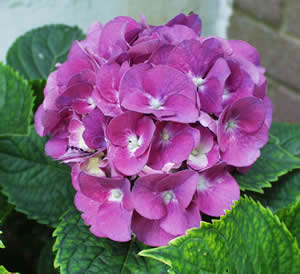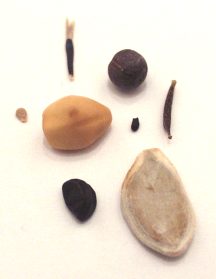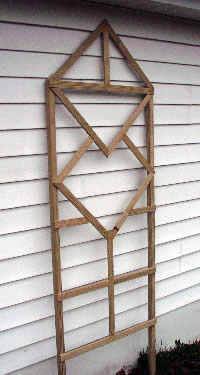Composting – Make a Bin
Do as nature intended with your lawn clippings and kitchen scraps – compost them! Whether you buy the top of the line bin, make your own, or just start a heap, your garden (and refuse collectors) will be thankful. The rich organic matter that develops in your compost pile will do wonders for your plants that no amount of chemical fertilizers can do. Read on to get started.
 Make a Wooden Pallet Compost Bin
Make a Wooden Pallet Compost Bin
Many gardening stores and catalogs will have wonderful compost bins available for purchase. If this is the best option for you, move on to “what to compost” later on this page. If you have a smaller yard and will compost on a lesser scale, you can simply heap your compost materials in a corner of the garden and turn them frequently. For those who have the time and space to construct your own, you have come to the right place.
Your homemade compost bin can be as simple or as elaborate as you like. You may even want a 2 or 3 bin system for easier turning and rotating of materials. The following instructions are for an inexpensive, very functional bin.
You will need:
4 wooden pallets, available at your local garden or hardware store (usually free)
wood screws OR strong wire
2 weather-proof hinges and 1 weather-proof gate latch
1. Arrange wooden pallets where your compost bin will be in your yard (it’s a bit heavy to move). Screw or wire 3 pallets together at sides.
2. Attach hinges to remaining pallet and open edge of other pallet. Attach gate latch to remaining free edges.
3. For best ventilation, dig a narrow trench in composting area and cover with hardware cloth.
4. Add your composting materials and let nature do the work.
Other options are:
1. Drill holes (about 100) in a plastic garbage can that has a locking lid. Layer compost materials as needed. Occasionally fasten the lid securely and “turn” the materials by rolling it back and forth on the ground.
2. Pound wooden stakes into the ground and attach hardware cloth, snow fencing, or lattice to the stakes. It is preferable to be able to remove one side for turning the materials.
What to Compost
For the most pH balanced and fast-working compost, think of your pile as lasagna – layers upon layers. Alternate between layers of “green” and “brown” materials, with an occasional dusting of soil and sprinkling of water. Moisture content should be like a wrung-out sponge. Turn your pile every two weeks to speed uniform decomposition.
| Green Materials | Brown Materials |
| vegetable scraps fruit wastes household plant clippings grass clippings coffee grounds hair eggshells (may attract pests) |
leaves (best when shredded with lawn mower) pine needles corncobs and stalks straw hay sawdust |







